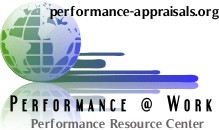Strengths Of 360-Degree Feedback Schemes
The 360-degree feedback approach for documenting and reviewing performance is the newest entry on the scene. In the 1990s it emerged as a method for reviewing and improving the performance of managers. It has been extended and used with employees at all levels.
The 360-degree feedback process involves collecting information about performance from multiple sources or multiple raters. For example, a review of a manager’s performance might involve collecting data, opinions, and observations from his or her employees, immediate supervisor, colleagues, and even customers. A review of an employee without supervisory responsibilities might entail eliciting the perceptions of his or her supervisor, customers, and colleagues. Typically those perceptions are collected using a rating system, so in a sense 360-degree feedback is a subset of the ratings method, with all the advantages and drawbacks of any rating system.
The theory makes sense. If you want to improve performance, you can learn more by taking into account the perspectives of a number of “involved parties,” rather than only the perspective of the employee’s immediate supervisor. The implementation, however, is problematic.
Clouding the issue considerably is that the sale of 360- degree feedback instruments, particularly computer-based tools to make the process easier, has become a huge and very lucrative business. Because of the amount of money involved in the industry, there’s a huge level of hyperbole and a lot of exaggerated success stories out there. The 360 method has become one of the more common “management fads.” That’s not to say it can’t be useful, but often the problems associated with it are ignored in favor of an unbalanced focus on its strengths.
Strengths of Multi-Source Employee Feedback
In a well-functioning work environment where there’s a high level of trust, the tool has value if it’s implemented properly. In situations where the recipient of the feedback does not trust the people who provide it, the tendency is for the recipient to discount the feedback, attribute negative feedback to ulterior motives, and feel angry or even attacked.
360 Feedback
and Trust
To work, 360-degree
feedback needs a stable workplace
with people of above-average maturity
and a culture of trust. Without those conditions, you may be better
going with another system. In the
wrong workplace,360-degree feedback
can be exceedingly destructive.
However, where workplace trust is high, so that people provide feedback in the true spirit of performance improvement and recipients take the ratings and comments at face value, the 360 method can be very useful.
Apart from expanding the scope of feedback available for performance improvement, there’s another positive effect of the 360-degree method. It reminds people that it’s important to pay attention to the effects their actions have on people other than the boss or the customer.
For example, it’s possible a salesperson might excel at sales by competing in a destructive way with the other salespeople at the firm. While this person’s sales figures may look great, his or her actions may be hurting the sales of colleagues. Feedback collected from coworkers reminds the employee that he or she is not only responsible for selling, but also expected to contribute to the success of the other salespeople—or at least not interfere with their success.
This example also illustrates that a 360-feedback system can provide information that we would normally not have to improve performance. A performance review system led by a manager would likely miss the effect of the salesperson’s actions on others’ sales, particularly if the manager focused on sales numbers.
